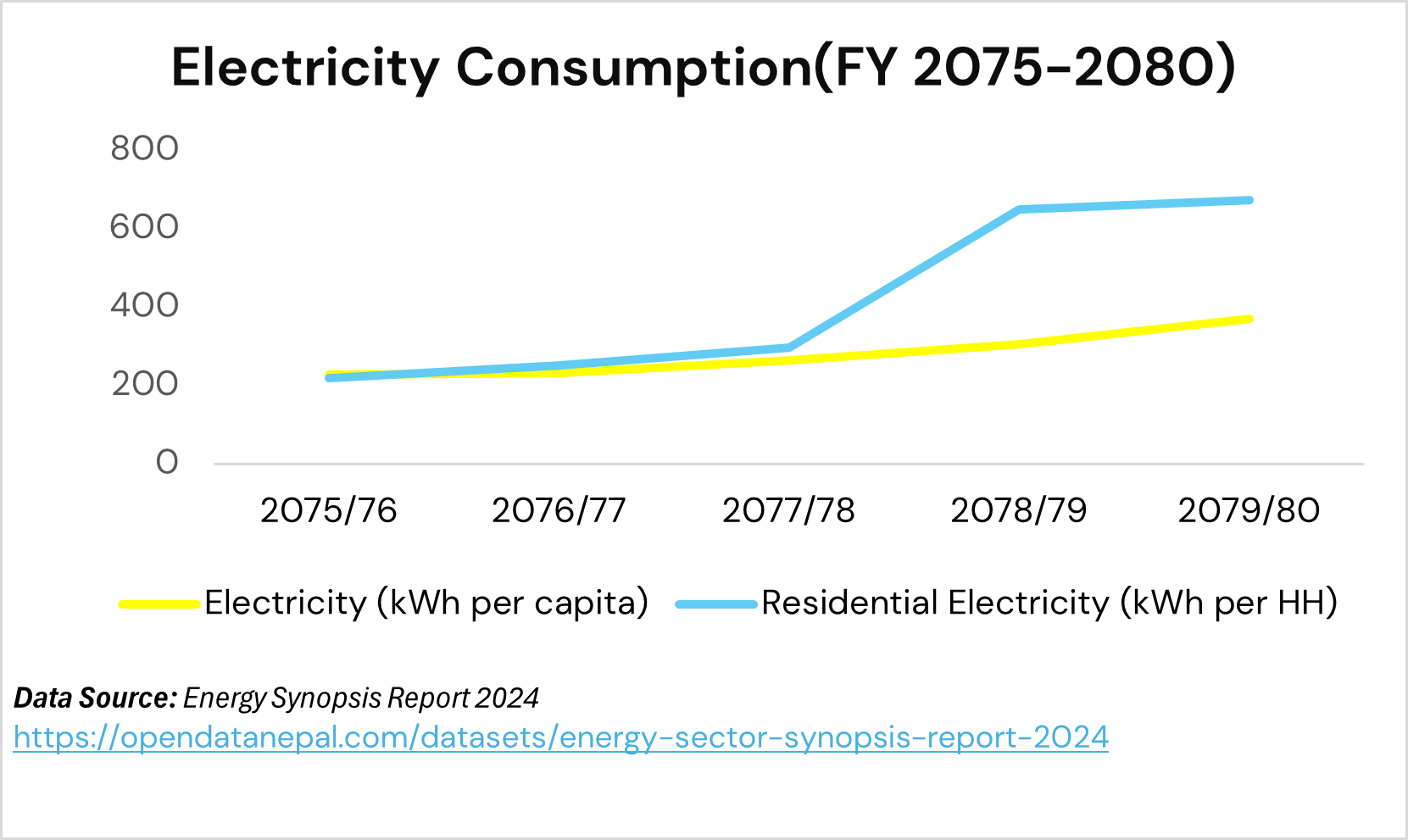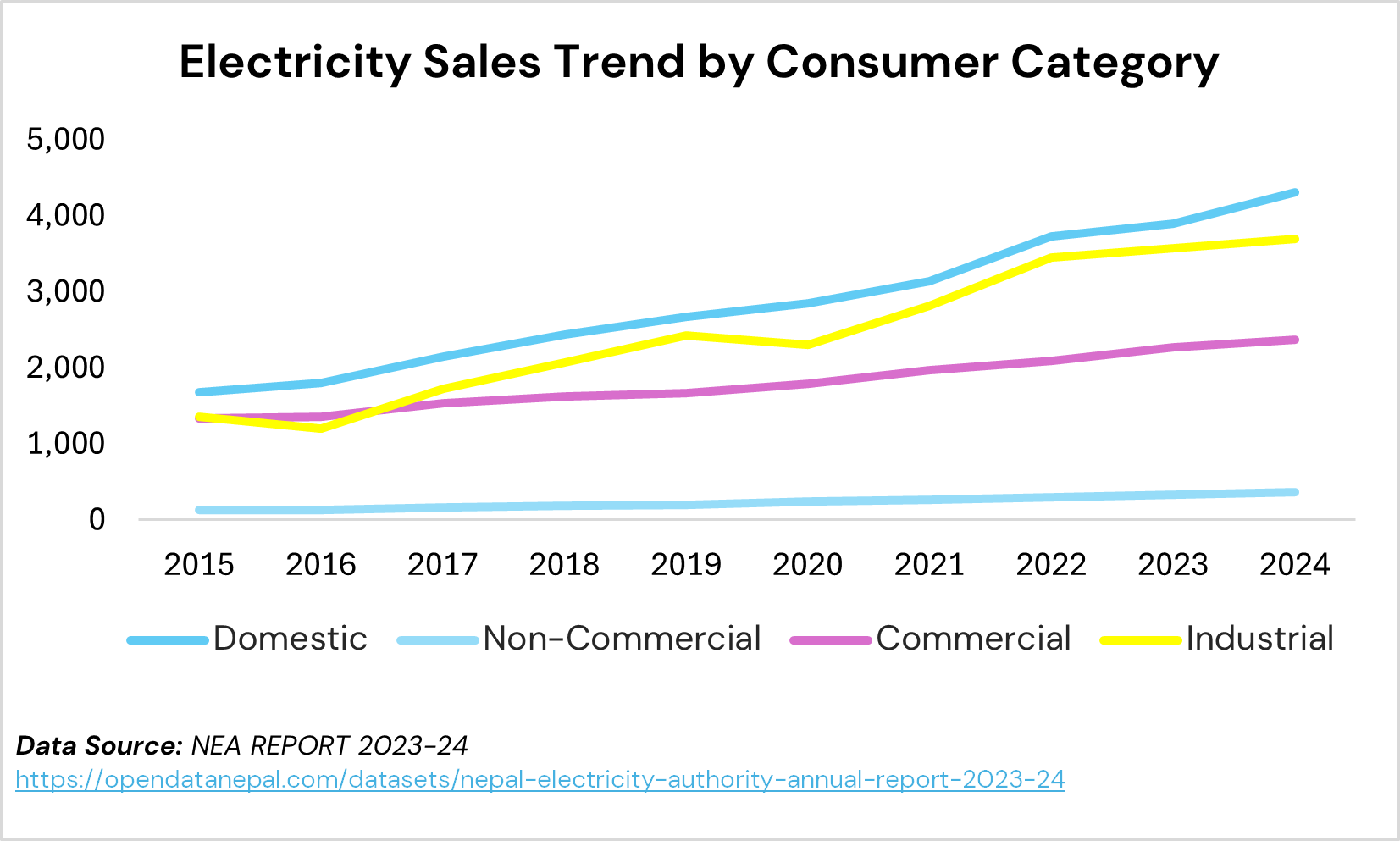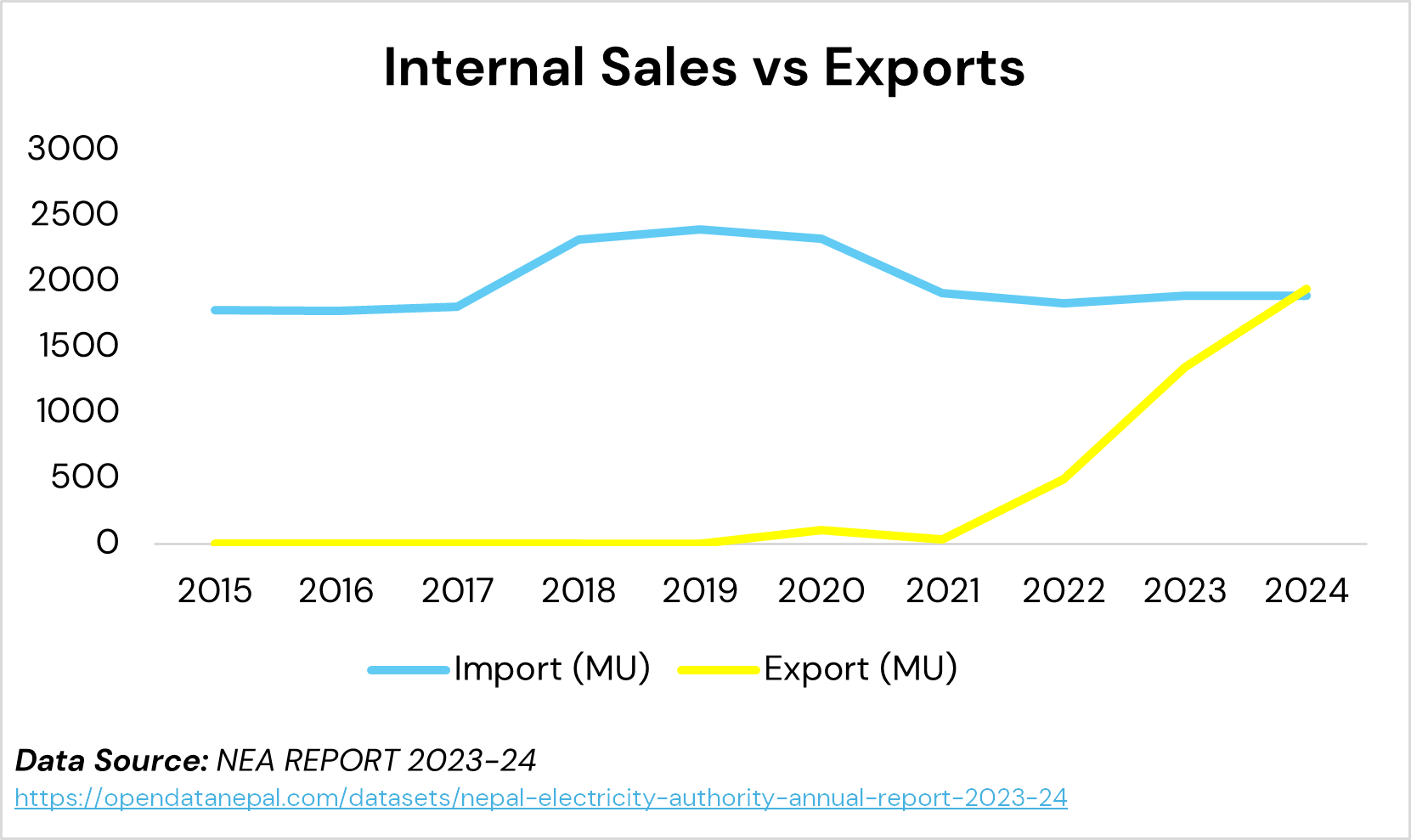Is Nepal Undergoing an Energy Transformation?
Just ten years ago, Nepalese households endured up to 18 hours of darkness a day. Today, the same nation is exporting electricity to its neighbors. Behind this dramatic turnaround lies a quiet revolution in energy policy, hydropower investment, and national electrification.
Nepal’s rising domestic demand and growing generation capacity tell the story of a country that refused to stay in the dark ; one that is now lighting up its future through renewable energy.
From Blackouts to Bright Homes
“From blackouts to bright homes , Nepal’s power story flipped in five years.”
A decade ago, most Nepalese households relied on kerosene lamps and diesel generators. Today, those same homes are powered by domestic hydropower. Household electricity use has tripled, and per-person consumption has nearly doubled.

This transformation is not just about numbers ,it’s about opportunity. Each new connection represents improved education, health, and productivity. Electrification has become one of the strongest indicators of Nepal’s social and economic progress.
The Rise of Domestic Demand
Electricity consumption patterns have evolved dramatically in the past decade. Domestic use shows the strongest and most consistent growth, driven by rural electrification and improved reliability. Industrial demand, after a brief slowdown in 2016, has accelerated sharply , a sign of Nepal’s expanding manufacturing base. Commercial usage has also risen steadily, mirroring growth in services and business activity.
Reliable power has turned into a multiplier for development : improving income opportunities, education, and public health outcomes. Over the past decade, Nepal’s internal electricity sales more than doubled ;from 3,741 MU in 2015 to 10,219 MU in 2024. This surge reflects how electricity has become the backbone of Nepal’s economy, powering homes, small businesses, industries, and digital infrastructure.

This growth reflects two main trends: more people living in cities with better housing, more appliances, and greater digital access, and industries like factories and small businesses increasingly using electricity from the grid instead of diesel.
In short, electricity is no longer a luxury; it’s an economic necessity.
So are we exporting any energy?
The answer is yes.
Exporting Clean Energy
From 2015 to 2019, Nepal was heavily dependent on electricity imports from India — averaging about 2,000 MU annually, while exports were almost zero.
The turning point came in 2020–2021 with major hydropower additions like Upper Tamakoshi (456 MW). Exports rose from just 3 MU in 2018 to 107 MU in 2020, showing early signs of surplus generation.
By 2022–2024, Nepal’s export capacity surged — 494 MU in 2022, 1,346 MU in 2023, and 1,946 MU in 2024, surpassing imports (1,895 MU).

Nepal’s Power Surge: Hydropower Takes the Lead
Nepal’s rise in electricity generation is directly linked to rapid hydropower expansion. Out of a total potential of 11,920 MW, around 2,538 MW is already operational. Another 5,809 MW is under construction, and 3,572 MW is in the project pipeline.
When completed, these projects could bring total capacity to nearly 12,000 MW ,enough to meet domestic demand, reduce fossil fuel imports, and expand exports.

The Road Ahead
As Nepal approaches full electrification and hydropower capacity nears 12,000 MW, the focus must shift to:
- Efficient transmission and grid reliability
- Energy storage and smart grids
- Regional interconnection with India, Bangladesh, and China
- Equitable access for rural and marginalized areas
If Nepal continues this trajectory, it can evolve from a power-deficient state into South Asia’s leading clean-energy hub illuminating not just its own future, but the region’s as well.
Key Insights
Nepal’s remarkable energy transformation—from chronic shortages to surplus electricity and regional exports demonstrates that access to reliable, renewable energy is a cornerstone of national development. Through strategic policy, public-private investment, and targeted infrastructure expansion, Nepal has not only powered its homes and industries but also catalyzed social progress, economic growth, and regional influence. As the nation nears full electrification and maximizes its hydropower potential, it stands poised to emerge as a leading clean-energy hub in South Asia, illuminating a sustainable and prosperous future for its people and the region.
About This Analysis
This analysis draws from data sourced by the Water and Energy Commission Secretariat, GON and aggregated datasets from Open Data Nepal (ODN). The primary source of information is taken from the Energy Sector Synopsis Report 2024 and NEA Report 2023-24.

